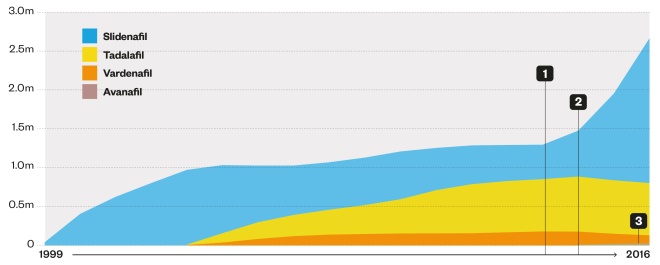
Mclean/Shutterstock.com
Like fuel to a fire, COVID-19 is accelerating our uptake of ideas we previously challenged. Consumers once hesitant about shopping online rapidly switched from the high street to digital stores. Higher education institutes pivoted to online teaching in just a week, after advocates of virtual tuition struggled to get buy-in for years. Within a day, working from home became the norm for office employees, many of whom are now resistant to returning to their old working patterns.
Although there has been some overstating of the long-term societal impact of the pandemic, many changes will be long-lasting and pharmacy will emerge changed in many ways too.
Pharmacy practice is already shifting. Earlier in 2020, preregistration students had their training disrupted and shouldered responsibilities earlier than they would normally. Clinical pharmacists in general practice have reported shifts into more efficient forms of working, more inclusion in the clinical team and being able to have a greater clinical impact[1]
. Hospital pharmacists have had similar changes in practice, with greater clinical autonomy and greater recognition of the skills they bring to the multidisciplinary team[2]
. And community pharmacists have been championed in words — if not in more tangible ways — by politicians and the public.
However, something that hasn’t changed for the better is pharmacists’ relationship with prescribing. Pharmacists’ main contribution to health is through the judicious use of medicines and the profession’s major expansion into prescribing practice is overdue. Prescribing should shift to being a core activity for pharmacists on, or close to, initial registration to harness their full capabilities.
Untapped potential
Pharmacists on post-admission ward rounds decrease costs, improve accuracy of drug histories and reduce risks to patients[3]
. Including pharmacists on ward rounds increases the number of interventions made to improve medication outcomes[4]
and improves prescribing quality[5]
. Meanwhile, in 2018, a Cochrane review shared less favourable results: pharmacist-led services of non-hospitalised patients had varying outcomes[6]
. Extending prescribing to more pharmacists would enable pharmacists to have a greater impact in this area.
Hoisted by our own petard
Pharmacists — acutely aware of the risks and harms associated with prescribing — have been apprehensive about gaining prescribing skills on registration[7]
. This curse of knowledge means that, despite being viewed by other professions as the experts in medicines and prescribing, we have always had a certain level of trepidation towards self-assessment of our own future potential.
In 2017, a survey conducted by The Pharmaceutical Journal suggested that only 11% of the profession had qualified as prescribers, while 17% of those had never prescribed
[8]
. By October 2020 — more than 14 years after pharmacist independent prescribing came into effect — the proportion of pharmacist prescribers reached just 18%, according to figures provided by the General Pharmaceutical Council (GPhC; data on file). In 2019, the NHS Benchmarking Network reported that only 61% of hospital pharmacists who are qualified to prescribe were doing so routinely[9]
.
A study of non-medical prescribers found that pharmacists were less likely to be responsible for prescribing decisions (although this may be related to their role in medicines reconciliation and be indicative of their integration into the multidisciplinary team), and they also described themselves as less confident than other non-medical prescribers[10]
. Yet a systematic review of stakeholders found largely positive views of pharmacist prescribing from patients and other clinicians, particularly when they had experienced pharmacist prescribing first hand[11]
.
Challenging the pharmacy culture
Barriers to pharmacist prescribing have been well-documented: limited access to prescribing qualifications; few opportunities to use the qualifications once obtained; and a lack of support and understanding about the skills that pharmacist prescribers have[12]
. In some cases, pharmacists have been unable to obtain mentors and yet, at the same time, clinicians are surprised that pharmacists are not prescribing more[8]
. These external barriers to changes in pharmacy practice are commonly discussed, but one barrier to changing pharmacy practice is the profession itself.
We must address our lack of professional confidence, our paralysis in the face of ambiguity, our concern with the way our profession is perceived by others and our risk aversion when it comes to taking on new roles, such as prescribing[13]
.
As a profession involved in the training of others in prescribing, both formally and informally in clinical practice, we should have more confidence in ourselves. Other professions are confident in their prescribing abilities. Prescribing on registration is planned in nursing and is likely to quickly appear in evolving professions, such as the physician assistant. Outsiders to the pharmacy profession might ask: “What is stopping pharmacists from doing something they are eminently qualified to do?”
If pharmacy is to deliver all it can for patients in the years ahead, pharmacy needs a change in professional culture[14]
. Are pharmacists made, or do they self-select? That’s up for debate, but perhaps our past training — with high-stakes assessments and a focus on technical accuracy — has developed black-and-white mindsets, rather than the shades of grey we need for nuanced clinical decision-making.
Cultural revolution
Large-scale cultural change requires a systemic approach. We need further reforms to pharmacy education, with a focus on clinical decision-making skills, to allow pharmacists to reach their full clinical potential[15]
.
We do, however, already have a good foundation to build on. Over the past ten years, pharmacy education has evolved and earlier education reforms have given us increased focus on clinical skills and the integration of science into practice. Although current educational standards have existed since 2011[16]
, it is only in the past three to four years that graduates from these new integrated curriculums have started in practice. Criticisms of pharmacy schools often appear to be based on outdated ideas of the kind of graduates we produce. Graduates of today, in fact, leave university far more prepared for the cognitively demanding clinical roles they will face from the outset.
A new foundation
While the MPharm curriculum has evolved, preregistration training has remained patchy in quality. Students have a variable experience, from well-designed rotational clinical placements to preregistration experiences with poor supervision and limited opportunities to develop clinical expertise. There is little point in changing the MPharm without a step change in our preregistration offering too. Otherwise, the disillusionment that some trainees experience with the mismatch of their clinical degrees and the reality of pharmacy practice will persist, and this will continue to affect the quality of the applicants we can attract to the profession.
Over the past decade, much of the debate around fixing this issue has centred on the integration of the preregistration year into an integrated five-year pharmacy degree. Graduation and registration as a pharmacist would occur simultaneously at the end of year five. Difficulties in implementing this, largely around funding, have led to a long-standing pause in developments. Early in 2019, new draft educational standards from the GPhC were proposed that provided the competencies required at registration, but there was no clear view on how the pharmacy degree would fit within this framework.
However, the COVID-19 pandemic generated a rapid realignment, with a consensus on a new model of pharmacy education, of which prescribing skills will ultimately be an essential part. The GPhC, the NHS, universities and professional bodies are now all agreed on the broad issues. A new foundation programme to follow the four-year MPharm is in development, with plans to start in summer 2021[17]
, which should prepare graduates for advanced clinical practice[18]
. The Pharmacy Schools Council has welcomed the changes, with a commitment to strengthening the science content of courses to support clinical skills and clinical decision-making[19]
.
Future graduates, who will be able to prescribe on registration, will have improved ability to assess the risk and benefits of medicines in the context of the individual patient’s characteristics; be able to apply complex knowledge; and have the clinical and communications skills that this will require. As the profession with the deepest understanding of medication-related issues, pharmacists can ensure that medicines are used (and not used, in many cases) in a rational way.
In September 2020, however, the GPhC clarified that its aim is for students who begin their MPharm degree in future to be independent prescribers by the time they join the register, but that a “separate independent prescribing course for registered pharmacists will remain in place for the foreseeable future”[20]
. Our professional pathway is at least preparing for prescribing, which may help attract the high-quality entrants we need to secure pharmacy’s future.
Without wider engagement in prescribing, our role will be attenuated to the detriment of patients. Existing roles are under pressure from robotics, hub dispensing models and pharmacy technician shifts into areas that do not require a four-year undergraduate education. Prescribing on registration is happening for other professions — we must not be left behind. If we do not embrace prescribing now, we fail to take responsibility for our professional domain.
Anthony Cox, head of education and reader in clinical pharmacy and drug safety, School of Pharmacy, Institute of Clinical Sciences, University of Birmingham
References
[1] Malson G. Pharm J 2020;305(7940). doi: 10.1211/PJ.2020.20208223
[2] Wilkinson E. Pharm J 2020;305(7939):20−22. doi: 10.1211/PJ.2020.20208114
[3] Fertleman M, Barnett N & Patel T. Qual Saf Health Care 2005;14(3):207−211. doi: 10.1136/qshc.2004.011759
[4] Miller G, Franklin BD & Jacklin A. Clin Med (Lond) 2011;11(4):312. doi: 10.7861/clinmedicine.11-4-312
[5] Mulvogue K, Roberts JA, Coombes I et al. J Clin Pharm Ther 2017;42(2):178−84. doi: 10.1111/jcpt.12489
[6] de Barra M, Scott CL, Scott NW et al. Cochrane Database Syst Rev 2018;9:CD013102. doi: 10.1002/14651858.CD013102
[7] McIntosh T, Munro K, McLay J et al. Br J Clin Pharmacol 2012;73(4):656-60. doi: 10.1111/j.1365-2125.2011.04133.x
[8] Robinson J. Pharm J 2018;300(7911). doi: 10.1211/PJ.2018.20204489
[9] Robinson J. Pharm J 2019;302(7921):24−29. doi: 10.1211/PJ.2019.20205958
[10] Cope LC, Tully MP & Hall J. Res Social Adm Pharm 2020;16(2):249−256. doi: 10.1016/j.sapharm.2019.05.013
[11] Jebara T, Cunningham S, MacLure K et al. Br J Clin Pharmacol 2018;84(9):1883−1905. doi: 10.1111/bcp.13624
[12] General Pharmaceutical Council. May 2016. Available at: https://www.pharmacyregulation.org/sites/default/files/gphc_prescribers_survey_report.pdf (accessed October 2020)
[13] Rosenthal M, Austin Z & Tsuyuki RT. Can Pharm J (Ott) 2010;143(1):37−42. doi: 10.3821/1913-701x-143.1.37
[14] Rosenthal MM, Austin Z & Tsuyuki RT. Can Pharm J (Ott) 2016;149(6):317−19. doi: 10.1177/1715163516672832
[15] Wright DFB, Anakin MG & Duffull SB. Res Social Adm Pharm 2019;15(5):600−06. doi: 10.1016/j.sapharm.2018.08.001
[16] General Pharmaceutical Council. May 2011. Available at: https://www.pharmacyregulation.org/sites/default/files/document/gphc_future_pharmacists_may_2011.pdf (accessed October 2020)
[17] Clews G. Pharm J 2020;305(7939):79−80. doi: 10.1211/PJ.2020.20208212
[18] Choudhary T & Newham R. Pharmacy Education 2020;215−224. doi: 10.46542/pe.2020.201.215224
[19] Pharmacy Schools Council. July 2020. Available at: https://www.pharmacyschoolscouncil.ac.uk/wp-content/uploads/2020/07/PhSC-Position-Statement-The-Science-Based-Therapeutic-Practitioner.pdf (accessed October 2020)
[20] Burns C. Pharm J 2020. doi: 10.1211/PJ.2020.20208368


